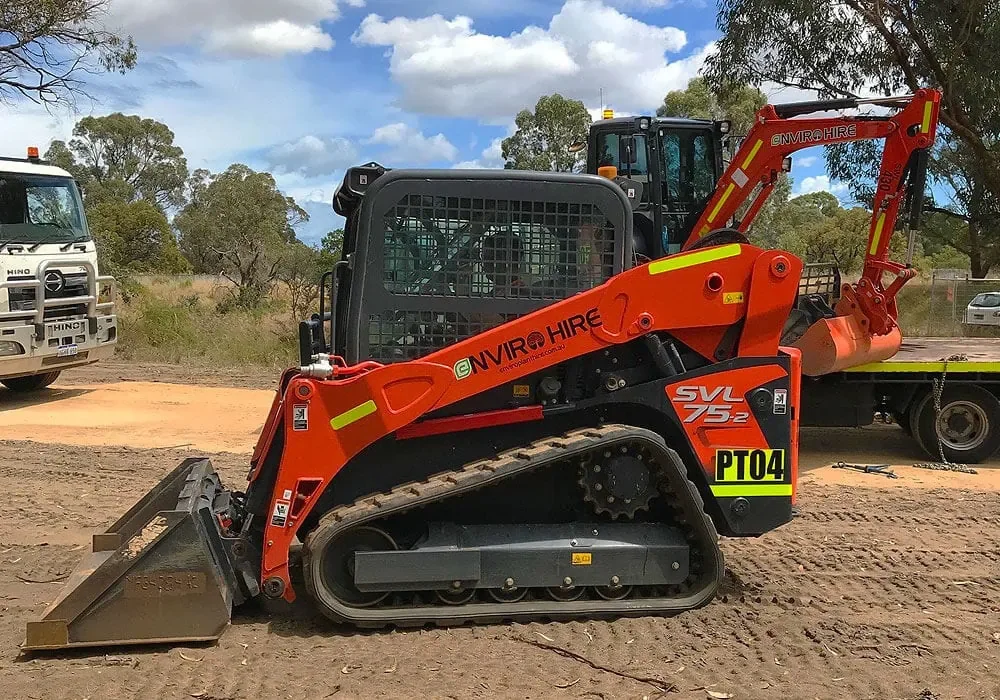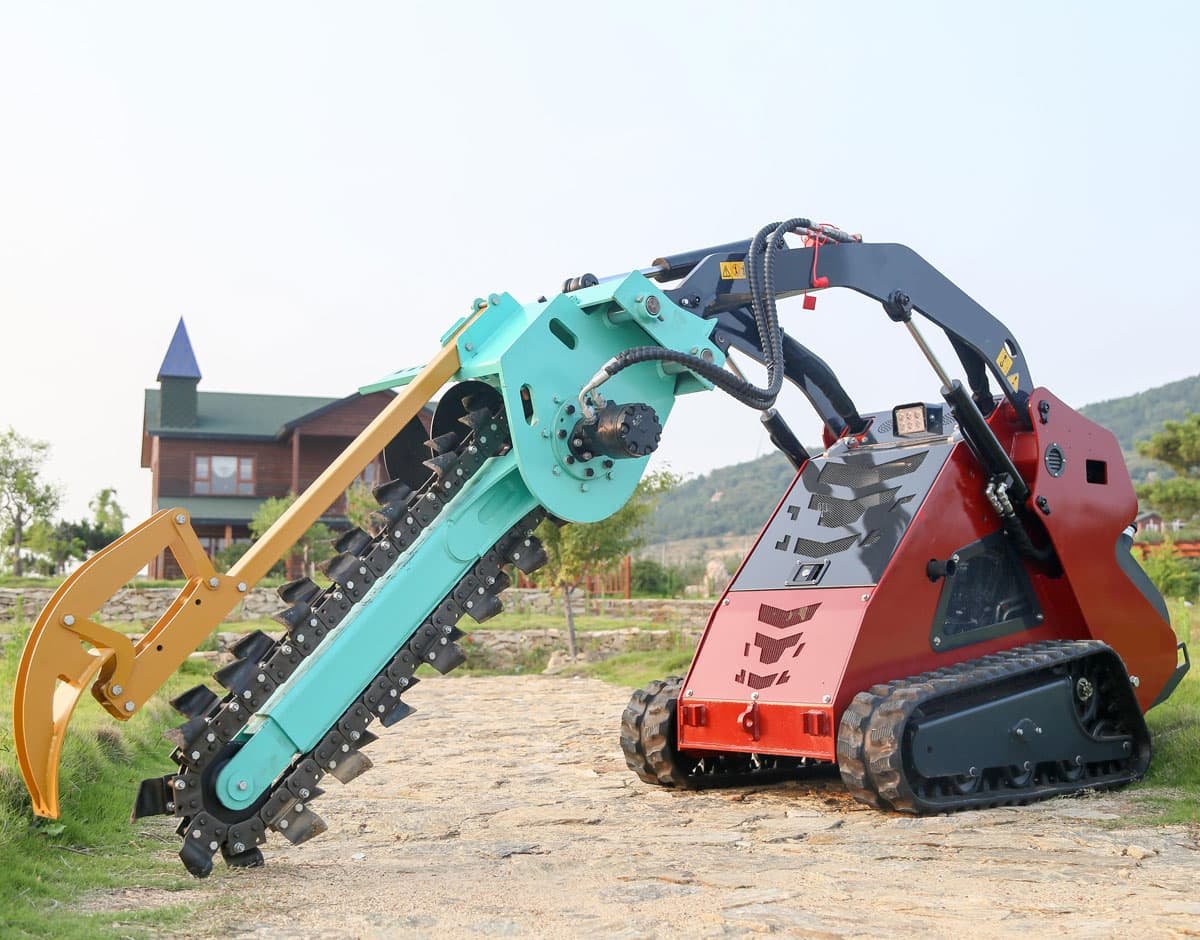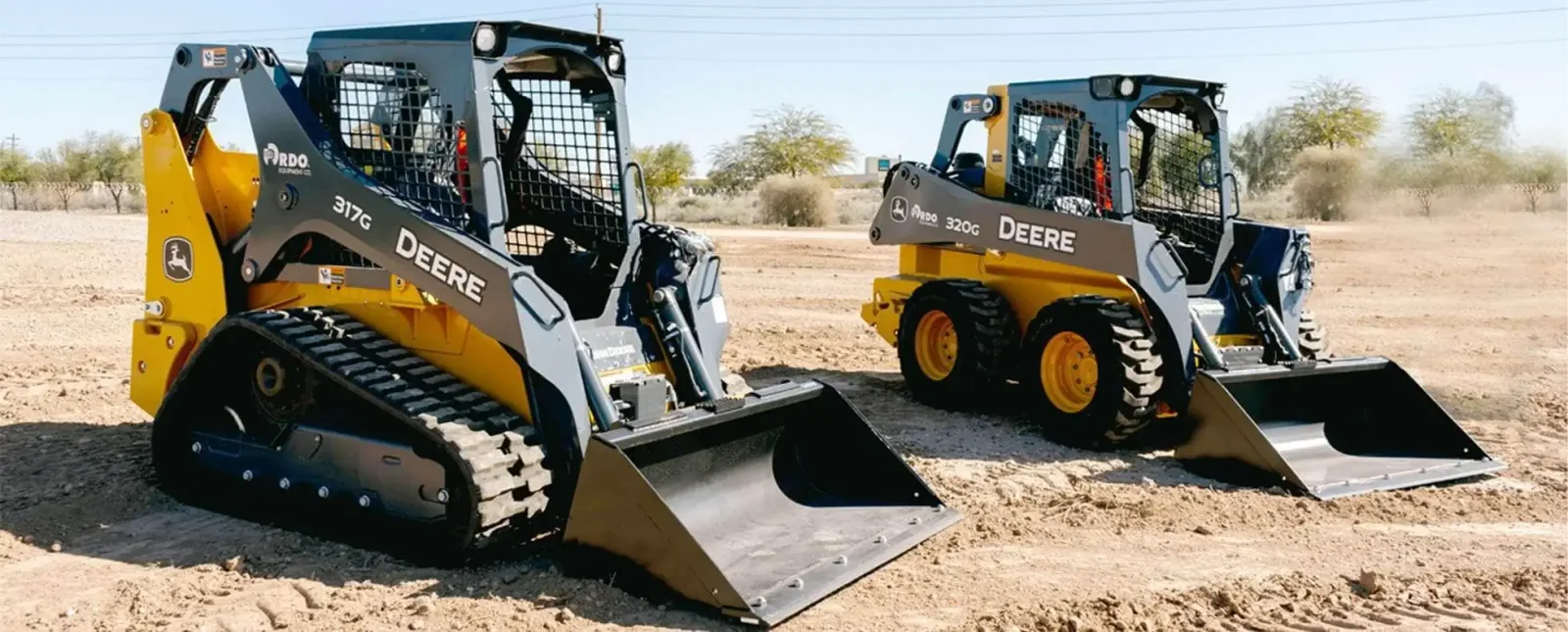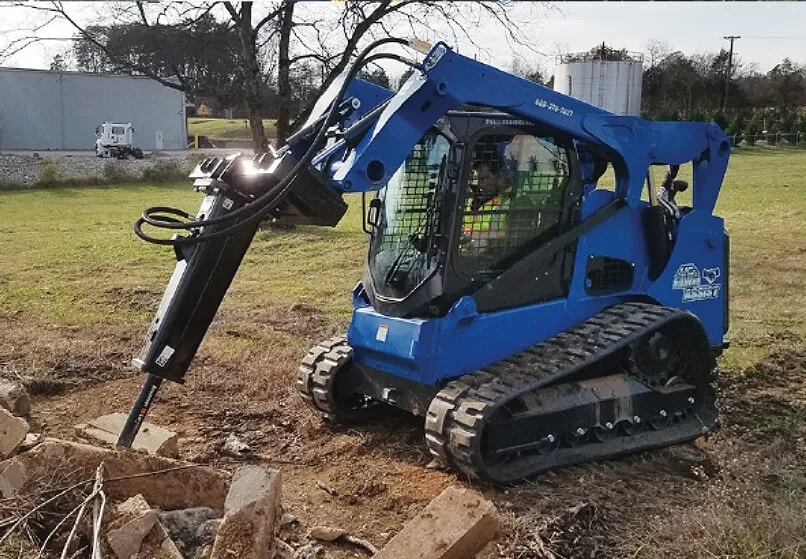Introduction
Are you in the market for a New Skid Loader? Before making that significant investment, you must arm yourself with the right knowledge. Purchasing the right skid steer loader can greatly impact your productivity and efficiency on the job. That’s why I’ve compiled a list of the top 10 things you should know before buying a New Skid Loader.
This blog will provide valuable insights from assessing your needs and understanding different models to evaluating load capacity, lift height, and attachment compatibility. Prepare to make an informed decision that will take your construction or landscaping projects to new heights.

Buying a New Skid Loader: Researching Your Needs
Before diving into the world of skid steer loaders, take some time to thoroughly research your needs. Start by assessing your specific requirements and workload. Consider the tasks you’ll be performing and the materials you’ll be handling. Are you primarily focused on construction projects, landscaping, or both? Understanding the types of jobs the skid steer loader will be used for is essential in determining the right specifications and features.
Additionally, evaluate the terrain and working conditions in which the machine will operate. Will you work on smooth surfaces, rough terrains, or uneven landscapes? This information will help you choose a skid steer loader that is well-suited for your environment and ensures optimal performance. Remember, a little research goes a long way in finding the perfect match for your needs.
Buying a New Skid Loader: Understanding the Different Models
Regarding skid steer loaders, the market offers a wide array of models to choose from. Understanding the different models is crucial in making an informed decision. Firstly, familiarize yourself with the various skid steer loader models available. Each model comes with its own set of specifications, features, and capabilities. Secondly, consider the differences between compact and full-size loaders.
Compact loaders are smaller and more maneuverable, making them ideal for tight spaces. On the other hand, full-size loaders offer higher lift capacities and greater reach, making them suitable for heavy-duty tasks. Lastly, weigh the advantages and disadvantages of each type. Compact loaders excel in agility and versatility, while full-size loaders offer more power and capacity.
By comprehending the distinctions between compact and full-size models, you can select the skid steer loader that best matches your specific requirements and maximizes your productivity on the job.

Buying a New Skid Loader: Assessing the Load Capacity and Lift Height
When buying a skid steer loader, assessing the load capacity and lift height is paramount to ensure it meets your requirements. Load capacity refers to the maximum weight a loader can safely lift and carry. Understanding load capacity is crucial because it determines the types and sizes of materials you can handle.
Consider the weight of the materials you commonly use to select a skid steer loader with an appropriate load capacity. Lift height, however, refers to how high the loader can lift its arms and attachments. Lift height directly impacts the machine’s versatility and ability to perform tasks efficiently.
Consider the tasks you’ll be performing, such as loading trucks or stacking materials, to determine the lift height that suits your needs. By assessing load capacity and lift height, you can confidently choose a skid steer loader that matches your workload, enhances productivity, and ensures safe and efficient operation on your job site.
Buying a New Skid Loader: Considering Attachments and Compatibility
When purchasing a new skid loader, don’t forget to consider the wide range of attachments available and their compatibility with the machine. Skid steer loaders are incredibly versatile, thanks to the various attachments that can be used with them. From buckets and forks to grapples and sweepers, there are attachments for almost any job you can imagine.
It’s important to assess the compatibility of attachments with your chosen loader model. Not all loaders can accommodate every attachment, so ensure the attachments you need are compatible with the loader you plan to purchase. Understanding attachment compatibility is crucial as it allows you to expand the capabilities of your skid steer loader and maximize its versatility on the job site.
Take the time to research commonly used attachments and their applications. Whether you require a trencher for digging trenches or a brush cutter for land clearing, being aware of the various attachments and their specific uses will help you make an informed decision and select the right skid steer loader for your needs.

Buying a New Skid Loader: Evaluating Engine Power and Hydraulic System
When buying a new skid loader, evaluating the engine power and hydraulic system is essential to ensure optimal machine performance. Engine power plays a significant role in the overall performance of the loader. A more powerful engine can handle heavier loads and maintain higher speeds, enhancing productivity on the job site.
Consider the type of work you’ll be doing and the intensity of the tasks to determine the appropriate engine power for your needs. Equally important is the hydraulic system, which powers the loader’s various functions and attachments. A robust hydraulic system ensures efficient operation, smooth control, and quick response times.
Evaluate the hydraulic system specifications, such as flow rate and pressure, to ensure they align with your workload requirements. Additionally, consider features like auxiliary hydraulic ports that allow you to connect and operate a wide range of attachments. By carefully assessing engine power and hydraulic system specifications, you can select a skid steer loader that delivers optimal performance and effectively meets your projects’ demands.
Assessing Operator Comfort and Safety Features Looking For a New Skid Loader
When buying a skid steer loader, it’s crucial to prioritize operator comfort and safety features. Operator comfort plays a significant role, especially for long working hours. Look for ergonomic seating, adjustable controls, and ample legroom to minimize operator fatigue and enhance productivity. A comfortable operator is a more efficient operator.
Equally important are the safety features of the skid steer loader. Safety should never be compromised. Look for features like ROPS (Roll Over Protective Structure), seat belts, and operator presence systems that enhance operator safety. Other features include clear visibility from the operator’s seat, backup alarms, and well-placed control panels.
Remember to prioritize safety when making your purchase decision. Some skid steer loaders offer additional safety features like rear-view cameras and proximity sensors for added peace of mind. By choosing a skid steer loader with a focus on operator comfort and a comprehensive range of safety features, you ensure the operator’s well-being and create a safer work environment for everyone involved.

Buying a New Skid Loader: Evaluating Maintenance and Serviceability
When purchasing a skid steer loader, it’s essential to consider maintenance and serviceability. Regular maintenance is crucial for keeping your machine in optimal condition and maximizing its lifespan. Look for skid steer loaders with accessible maintenance points, such as easy-to-reach filters and lubrication points.
Features like removable panels and simplified component access can facilitate maintenance tasks. Assess the maintenance requirements of the loader, such as recommended service intervals and the availability of service manuals or online resources.Furthermore, consider the service options available for the particular model you’re interested in.
Look for manufacturers or dealerships that offer reliable and efficient service support, including the availability of spare parts, certified technicians, and warranty coverage.
By evaluating maintenance requirements and service options beforehand, you can ensure that your skid steer loader is well-maintained. Serviced promptly when needed, and operating at its best, minimizing downtime and maximizing productivity on your job site.
Buying a New Skid Loader: Understanding the Warranty and Support
Understanding the warranty and support for a New Skid Loader is crucial. Warranty coverage provides financial protection in case of issues or malfunctions. Consider the duration and coverage details. Also, evaluate the manufacturer’s reputation and support.
Look for reviews and industry ratings. Assess the after-sales support offered, such as technical assistance and access to service centers. Understanding warranty terms and after-sales support ensures you’re well-supported throughout ownership, maximizing the value of your skid steer loader.
Buying a New Skid Loader: Considering Budget and Financing Options
When considering the purchase of a skid steer loader, it’s essential to consider your budget and financing options. Understand the factors that affect the cost, such as brand, size, and features. Set a budget based on your requirements and financial situation, considering upfront costs and long-term expenses.
Research financing options like loans, leasing, or equipment financing to find the one that best fits your needs. Compare interest rates, repayment terms, and any associated fees. By carefully considering your budget and exploring financing options, you can make a financially sound decision and acquire the skid steer loader that meets your needs without straining your finances.
Buying a New Skid Loader: Conclusion
Before purchasing a New Skid Loader, being well-informed is crucial. Understanding your needs, evaluating different models, assessing load capacity and lift height, considering attachments and compatibility, and evaluating engine power and hydraulic systems are all important factors. Additionally, key steps include:
- Assessing operator comfort and safety features.
- Evaluating maintenance and serviceability.
- Understanding the warranty and support.
- Considering your budget and financing options.
By following these ten things you should know, you can make an informed decision and choose the right skid steer loader that meets your specific requirements, maximizes productivity, and ensures a smooth and efficient operation on your job site.
Contact Us today to purchase your first skid steer loader at an affordable price.


